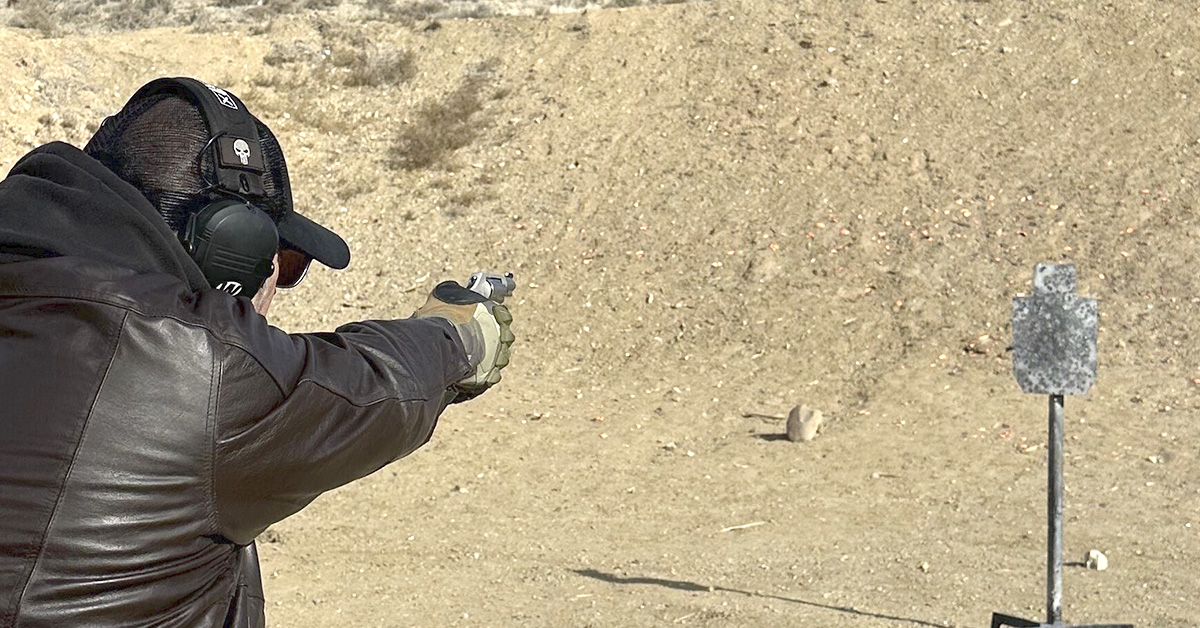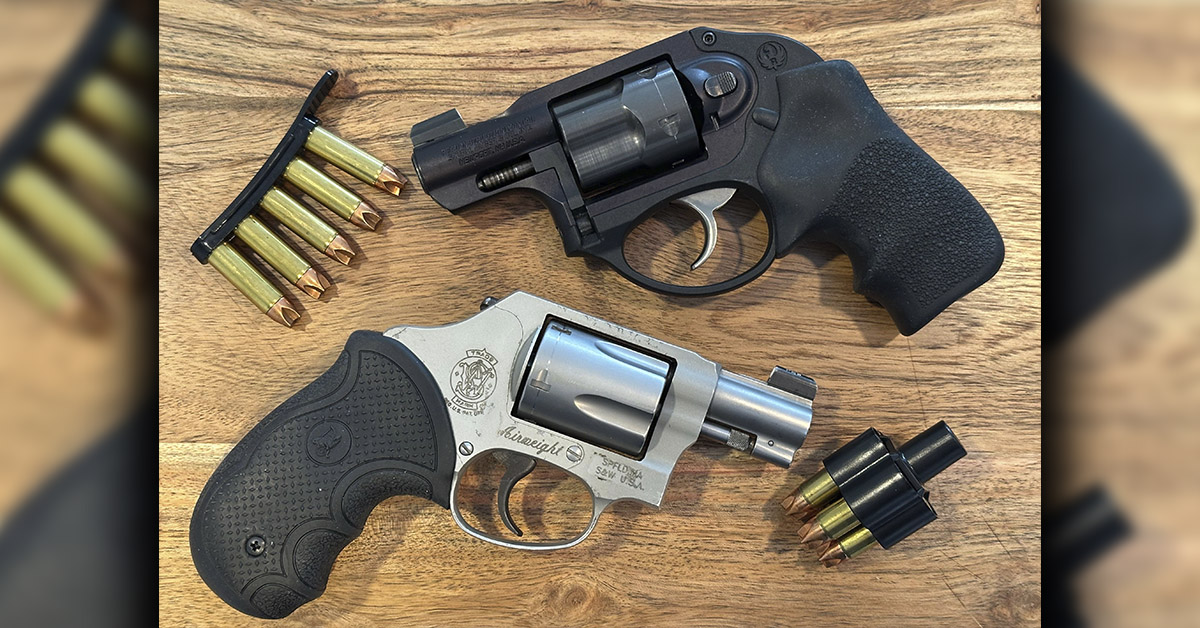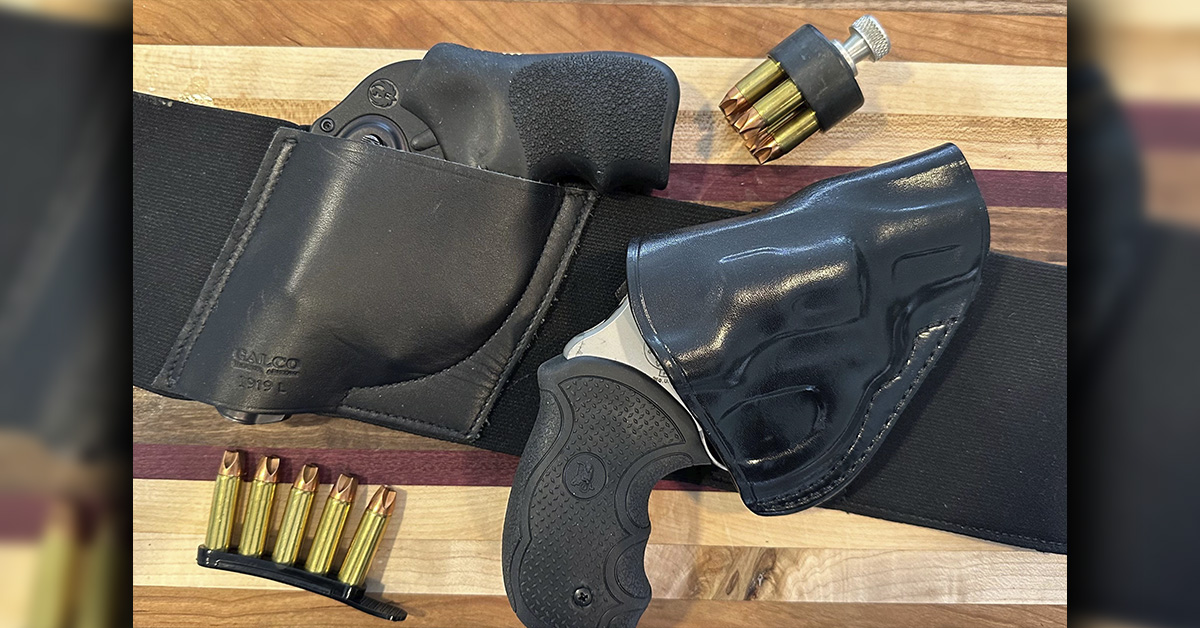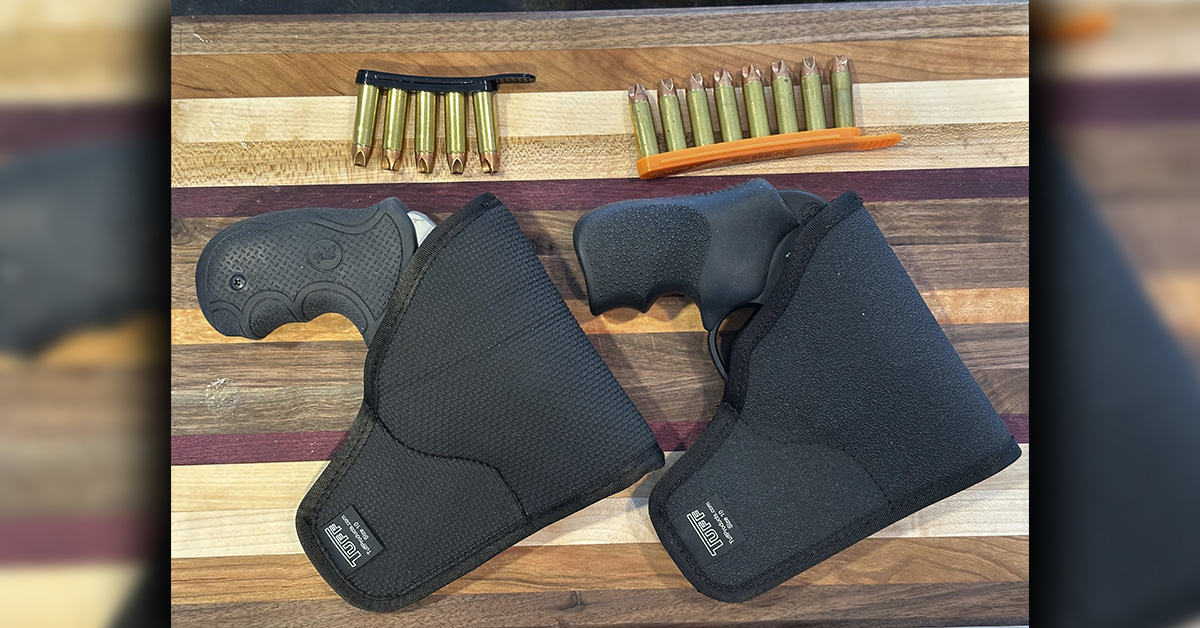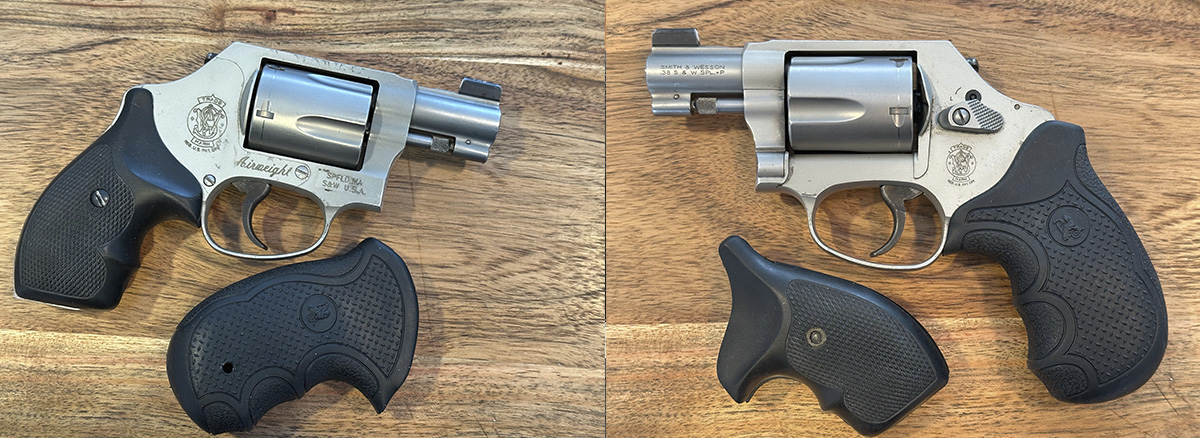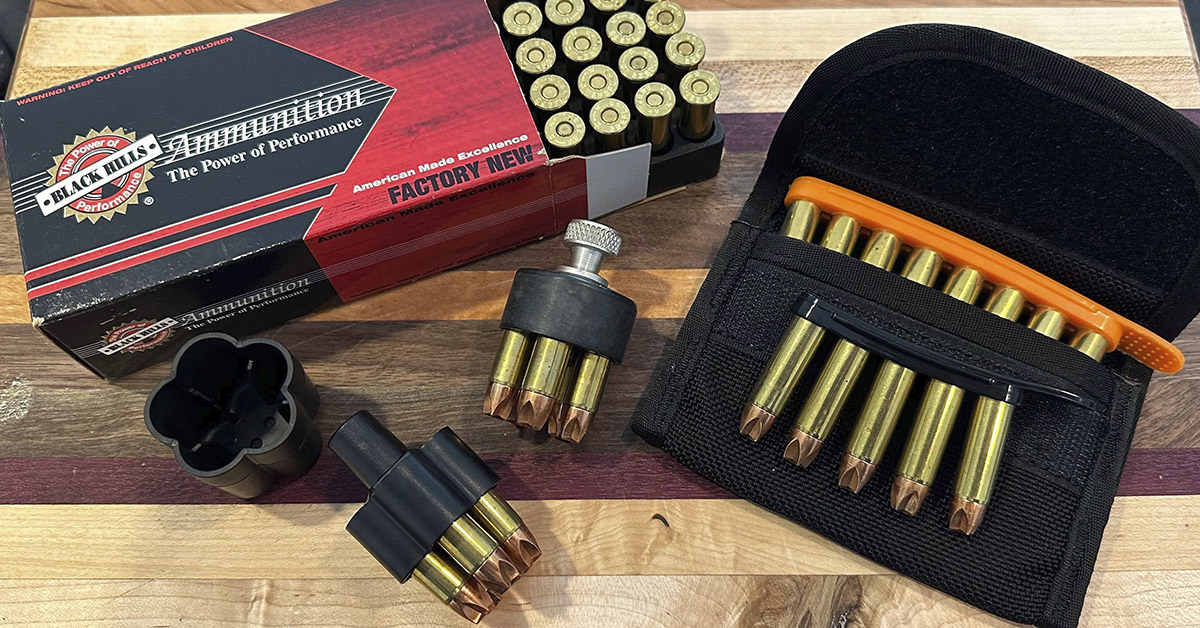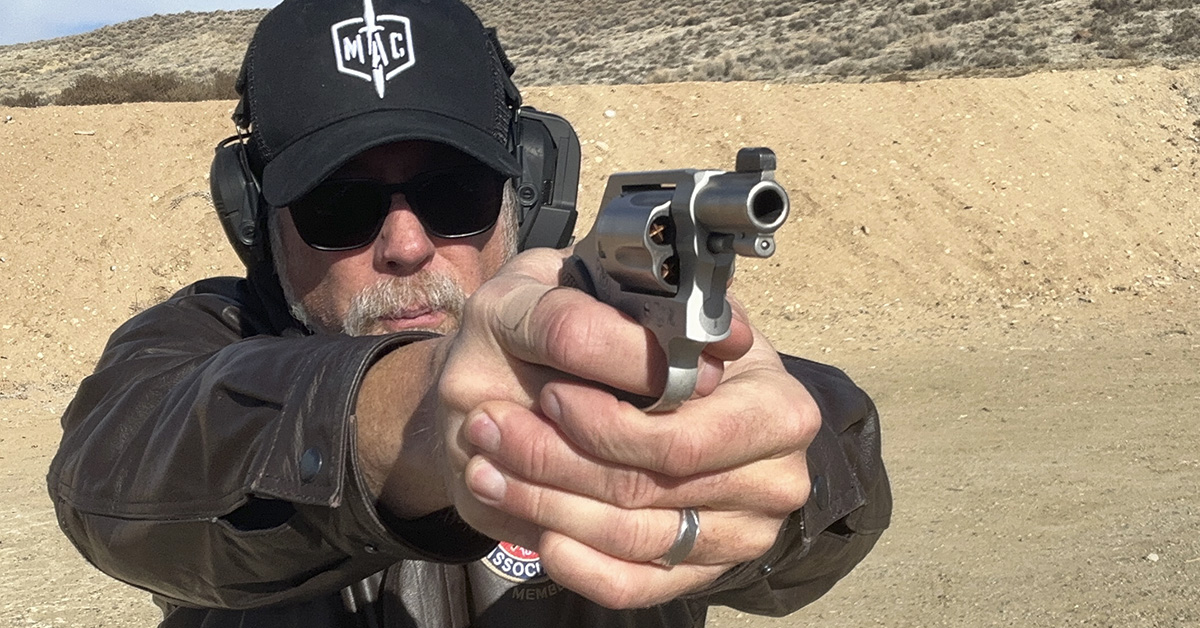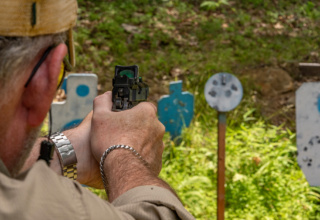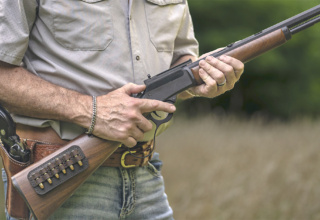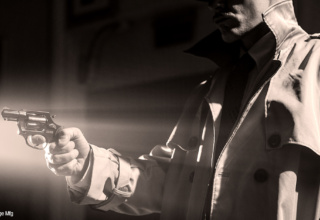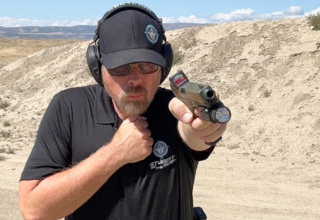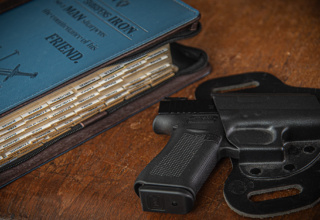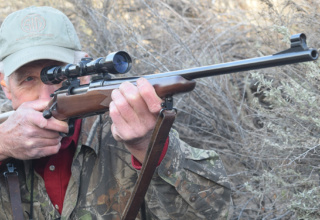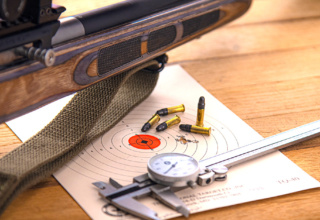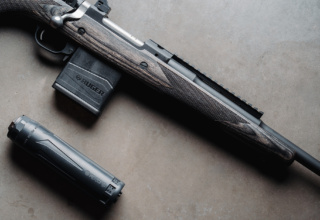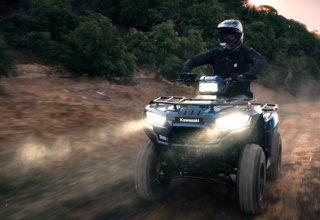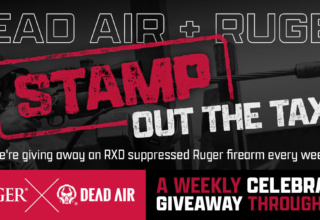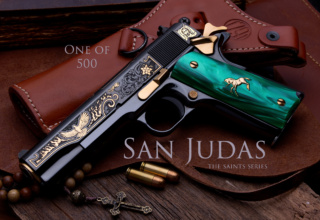Compact revolvers may seem like a reasonable solution for deep concealed carry and simplified handling, but are they? Here are several things you should consider before opting for a pocket “wheel gun.”
by Paul G Markel
While the war over which company will produce the most popular polymer-framed, striker-fired pistol has been waging on, one style of concealed carry handgun has been quietly trucking along without much fanfare. I must admit that it had been a good while since I focused deliberately on the compact double-action revolver. That was until we at SOTGU received an inquiry: “Can I bring a revolver to your handgun class?”
My emphatic answer to that question was, “Yes, absolutely. If you bought a revolver for concealed carry or home defense, we definitely want you to bring it to training.” We even produced a short video to address that question, which, rather surprisingly, garnered a lot of attention. And so, I turned my attention for the first time in many years to the compact revolver or, as we used to refer to them generically, “the J-Frame.” The J-Frame model is the compact revolver design made by Smith & Wesson, but we are used to using “J-Frame” the way people say “Band-Aid” to refer to all self-adhesive bandages.
Historical Background
I have been fortunate to be alive and paying attention during several significant eras in the firearms world. When I became a United States Marine, the M1911A1 .45 ACP pistol was still the issued service pistol, and I carried one for two years. Then we switched over to the M9 Beretta in 9x19mm NATO and I learned how to run that gun and carried it for two years.
After my first enlistment, I did what tens of thousands of recently discharged veterans did — I went to the Police Academy. The year was 1992 and the double-action revolver was still the mainstay for many, dare I say the majority, of law enforcement agencies in the United States. I recall that at least half of the cadets in my academy class were using DA revolvers. Of those, 100% were Smith & Wesson revolvers. As I became more intimately familiar with the inner workings of American law enforcement, I found that in the early 1990s, most of the detectives or “plain clothes guys” were still carrying some form of Smith & Wesson J-Frame 5-shot .38 Special revolver.
From a personal standpoint, I trained with and learned how to run both the full-sized 6-shot DA revolvers as well as the compact 5-shot versions. I learned the ins and outs of “speedloaders” and “speedstrips” or “quickstrips.” During a specialty course entitled “Pocket Guns and Penlights” I spent three full days and two nights at the Gunsite Academy running compact 5-shot DA revolvers on the square range as well as in shoothouse scenarios both day and night. It was quite the eye-opening experience, particularly when the scenario included multiple “bad guys” spread out in the shoothouse. Keeping those little guns fed and full was a challenge, especially under the stress of a lowlight scenario.
Pocket Pistol Reality Check
Prior to beginning this review, I frequented a few gun shops and engaged the folks behind the counter in conversation. My primary inquiry regarded who exactly was purchasing the little wheelguns in the glass display cabinets. I went to three different gun stores, but the response I received to my questioning was basically the same. One clerk told me, “It’s mostly women who ask for them.”
Another gentleman said, “Old guys come in and buy those for their wives because they can’t rack the slide on an auto.” Rhetorically, I asked the salesman how a woman who was too weak to rack a slide was going to be able to press the 12-pound DA trigger on one of those compact revolvers. He just shrugged his shoulders and laughed.
The mythology that still surrounds the double-action revolver is that it is “easier to learn how to use” than a semi-automatic pistol. While the loading process for a DA revolver might seem “easier” than an autoloader, that is about where it stops.
What we always knew back in the old days and what seems to have been largely forgotten or lost is that the compact revolver is simultaneously one of the most convenient to carry and most difficult to shoot personal defense guns on the market. Keep in mind, we should not be carrying guns as “good luck charms.” If you carry a gun or have one for home defense, you need to be prepared to use it confidently and effectively. That means training and practice.
While researching this piece, I went to the websites of what I would consider to be the top three manufacturers of 5-shot compact revolvers. I searched the technical specs for the double-action trigger press weight for each and found that the companies had failed to list those stats. Could that be because the trigger pull weights tend to double or triple that of a modern striker-fired pistol?
J-Frame Challenge
During the time I was preparing this review, I chanced to broach the subject with an acquaintance of whom I know likes to carry a revolver as a “pocket gun.”
“Oh, I’m not a gunfighter, but I think I’m pretty good,” the gentleman stated to me. That got me thinking. Just what kind of challenge might I come up with that would separate the “I’m pretty good” from the genuinely competent shooters?
The next time I went to the range, I set up a half-sized steel silhouette and measured off five yards. The challenge would be this: with no warmup and the compact revolver in your hands, on the word GO, put five shots on target in under five seconds. Have a friend use the second hand on their watch. I ran the drill successfully with my S&W Model 637 and a Ruger LCR.
Five seconds is a generous time allotment. If you miss any shots, you are not “pretty good” and need more training and practice. You can use a paper target rather than steel, but the shots need to be in the “preferred zone” and not spread out all over a giant B27 target.
Loading and Loading Again
The compact double-action revolver is super-convenient to carry but does suffer from a low-capacity round count. If you have any hope of putting more ammunition into the cylinder under the pressure of a life and death situation, you are going to need to practice until doing so becomes second nature.
Step one is to choose a loading method. There are basically two types of loading devices for DA revolvers: “speedloaders” and “QuickStrips” and each one has benefits and drawbacks. The speedloader (several makers produce them) holds your rounds in a circle the same size as the chambers in your cylinder. A speedloader inserts all five fresh rounds simultaneously, but they carry in a pocket like a rock. Police officers used to have special speedloader pouches on their duty belts to store these devices until needed.
The QuickStrips, from Tuff Products can be had in 5-, 6-, 7-, and 8-round configurations and, as you can see from the included photo, the cartridges are held in a straight line, making the QuickStrip far easier to carry in a pocket. With QuickStrips, you load two cartridges at a time.
Whichever method you choose — some people use both — I would highly suggest that every time you load your revolver and then load it again that you use either the speedloader or QuickStrip. Yes, I understand that you can load rounds one at a time when there is no time constraint; however, going back to the understanding that loading a DA revolver under stress is a difficult skill to master, the more reps you get the better you will become.
No Naked Guns
One of the most seductive reasons people use when buying a compact revolver is the idea that it can be carried conveniently in a pocket or purse sans holster. Such thinking is a recipe for disaster. Aside from the dust, dirt, and debris that will work its way into your gun’s action, you have the threat of coins, hairpins, car keys, as well as the errant finger, finding their way into the trigger guard.
We have a close friend whose mother used to carry a compact revolver as a “purse gun.” Our friend shared with us an incident in which her mother was balancing a clothes basket in one hand/arm and fishing for her house keys with the other. The gun in her purse discharged and sent a bullet through her leg, clipping the femoral artery. If it were not for an improvised tourniquet, the poor woman would have died. She is not the only person to have a negligent discharge with a naked pocket gun.
Thanks to modern holster makers, there is no reason to ever carry a gun naked in a pocket or purse. For this review, I went to my holster tote and found a very nice black leather belt holster for a S&W J-Frame from Galco Gunleather as well as an “Underwraps” belly band from that same company.
If you are set on carrying your compact revolver in a pocket, whether pants or jacket or a purse, please, I am begging you, purchase a purpose-built pocket holster. The best ones come from Tuff Products. They have their original Pocket Roo, which I have been using in one form or fashion since 2011, or Tuff’s new Super Tac Pocket Holster.
Ouch! That Hurts.
When the new gun buyer, whether male or female, holds the compact revolver in their hands at the gun store, the one thing they cannot perceive is how the felt recoil will feel in their hands. Many of the little wheel guns on the market are sold with small or compact grips on them so they will be “easier to conceal.” Brothers and sisters, when it comes to dealing with the felt recoil in a handgun, there are several items that mitigate the shock you feel in your hands.
Weight is a factor. The larger/heavier the gun the less it will move when the cartridge goes BOOM. The recoil spring in semi-automatic pistols is another device that mitigates some of the felt recoil. Then you have grip/frame size. The more grip surface you have to put muscle tension onto and control the gun the less severe felt recoil will be.
With the compact revolver, you essentially have none of the above. The guns are purposely made light, they have small grips that offer little to hold onto, and there are no recoil springs. Therefore, 100-percent of the felt recoil goes into the shooter’s hands. If the shooter is inexperienced, has small/delicate hands, or lacks strength, even moderate or light .38 Special loads will hurt, and the experience will be painful.
You cannot do anything to change the factory weight of the handgun, but you can put better grips on it. This is a good place to point out that the Ruger LCR, though very light and easy to conceal, has superb rubber grips from the factory and arguably the best DA trigger press in the genre.
Smith & Wesson is renowned for making superior DA revolvers, but the tiny little grips they put on them leave something to be desired when it comes to actually shooting the guns. For my personal S&W Model 637 Airweight, I switched out the factory grips for a set from Pachmayr. No, the new Pachmayr grips are not as compact, but they make the shooting experience much more enjoyable.
Ammo Considerations
During the heyday of the J-Frame revolver, there was a constant search for the “magic bullet.” The short barrel of these .38 Special compact guns does not help the projectiles gain much velocity. Even the “+P” loads with lightweight bullets are hard pressed to reach 1000 feet per second. The average .38 Special loads will clock somewhere in the high 700s to low 800s fps. For years, there was a debate between heavy, slower bullets and lighter, faster bullets.
I remember when the Federal 158-grain Nyclad semi-wadcutter hollow point was considered to be the load for short-barreled, compact revolvers. For defensive ammunition in .38 Special, it was always a crap shoot regarding whether or not the projectiles would expand. What if you could get expanding bullet performance from a projectile that does not need to expand? That is exactly what you get from the Black Hills Ammunition HoneyBadger line of ammunition with the FTM (fluid transfer monolithic) projectiles. The Black Hills .38 Special HB load is +P and uses a 100-grain bullet at a factory velocity of 1200 FPS.
Regardless of which .38 Special loads you use for practice and training, when it comes to loading up your pocket blaster to save your life, use a premium load from a reputable manufacturer.
Parting Thoughts
My hope with this piece has been to inspire the reader. While that compact revolver is super-convenient to carry, carrying it on your body does not provide a magical cone of protection. You need to have mental clarity to understand that your choice of firearm might be required to save your life or the life of someone who relies on you.
If you are going to carry a compact revolver, you must accept that it requires more time and effort to master than something like a Glock 19 or SIG 365, not less. That’s not my opinion, that is reality. Carrying a gun for self-preservation is serious business and we need to approach it as such.

